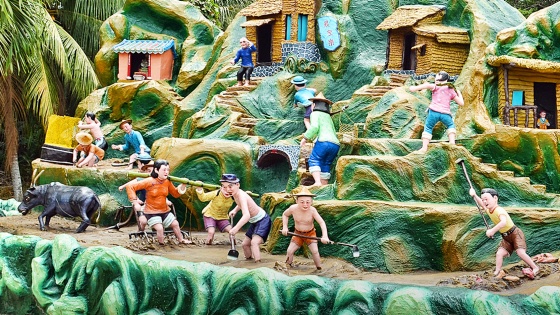
Overview
Haw Par Villa, often known as Tiger Balm Gardens, is undoubtedly an legendary topic park situated in Singapore. This distinctive attraction delivers guests a glimpse into Chinese mythology and folklore by way of its spectacular and intricate statues, dioramas, and reveals. Let's get a closer look at the essential aspects of this interesting place.
Heritage:
Haw Par Villa was originally developed by Aw Boon Haw, the magnate behind the famed Tiger Balm ointment. The park opened its doors in 1937 as a way to both of those entertain and educate people about traditional Chinese values, record, and beliefs. All over the a long time, it's got gone through several renovations but has managed to keep its original allure.
Mythological Figures:
One of many main highlights of Haw Par Villa is its wide collection of statues depicting figures from Chinese mythology and legends. Guests will face figures like Journey towards the West's Solar Wukong (the Monkey King), Eight Immortals from Daoism, and also essential deities for instance Guanyin (Goddess of Mercy) and Buddha Shakyamuni.
Theme Parks within just Haw Par Villa:
Inside Haw Par Villa by itself are several distinctive locations or sections:
Ten Courts of Hell: Most likely one of the most intriguing areas of Haw Par Villa is Checking out "The 10 Courts of Hell." In this article readers can witness graphic scenes depicting punishments for various sins according to conventional Chinese beliefs about afterlife retributions.
Taoist-Mythology Sculptures: This region showcases breathtaking sculptures depicting stories from historic Taoist myths. These vivid artworks provide to lifetime tales which were passed down by means of generations in vivid detail.
Garden Sceneries: Further than mythological sculptures lie serene gardens crammed with picturesque landscapes adorned with attractive bouquets and plants—a perfect space for readers to take it easy amidst character's magnificence or delight in an informal stroll.
Teochew Opera Centre: The Teochew Opera Centre is a traditional theater location that routinely hosts performances from the Teochew opera, a significant sort of Chinese musical drama with unique regional traits in its costumes, new music, and storytelling.
Cultural Significance:
Haw Par Villa retains enormous cultural significance as it offers an opportunity to take a look at a variety of elements of Chinese society, folklore, and religious beliefs. It serves as both an open up-air museum along with a spot for communal actions like festivals or instructional plans enabling visitors to realize insights into historic Chinese traditions.
Additionally, the park's authentic intention was to teach visitors about moral values through vivid depictions of heaven and hell – satisfying advantage and condemning vices. Hence Haw Par Villa functions as not only an amusement park but in addition a ethical guide educating vital ethical ideas from common Chinese philosophy.
Modern Relevance:
Irrespective of being created many years ago, Haw Par Villa continues to draw in locals and holidaymakers alike as a result of its uniqueness and timeless attractiveness. The park has managed to Mix custom with contemporary factors by Arranging gatherings such as art exhibitions, lantern festivals for the duration of mid-autumn celebrations showcasing the fusion involving modern aesthetics and traditional themes linked to the villa.
Lately, there are endeavours by authorities to refurbish aspects of the attraction while ensuring its historical authenticity. This ongoing maintenance ensures that Haw Par Villa remains accessible for generations to return though preserving its rich heritage value.
Summary:
Haw Par Villa stands out among the Singapore's sights for its immersive knowledge into mythical realms by means of intricately-made sculptures depicting deities, legends, morality tales and punishments in Taoist mythology-motivated gardenscapes - all in a reflective surroundings emphasizing existence lessons based on compassion revealed to Some others because it conveys ancient knowledge guided by moral ideas conducive for self-improvement Found amidst attractive scenic landscapes which here makes it suitable both for cultural exploration lovers enthusiastic about China's large mythology/history/backgrounds/legends at the same time(proporotinately with owing rverence in the direction of central topic of representing conventional Chinese society and beliefs).